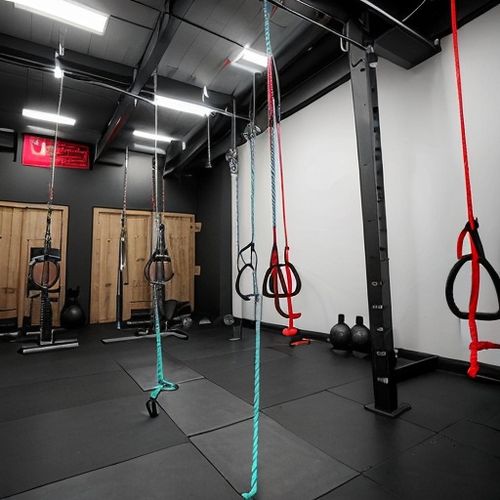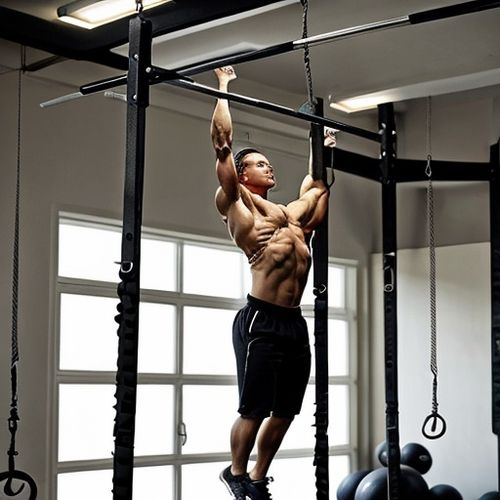The fitness world is constantly evolving, with new training methodologies emerging to challenge conventional workout routines. Among these innovative approaches, suspension training has gained significant traction for its versatility, effectiveness, and adaptability to various fitness levels. Unlike traditional weightlifting or machine-based exercises, suspension training leverages body weight and gravity to create resistance, offering a unique blend of strength, stability, and mobility work.
The Origins and Principles of Suspension Training
Suspension training traces its roots back to military training programs, where soldiers needed portable and effective workout solutions in the field. The concept revolves around using straps or ropes anchored to a fixed point, allowing the body to move freely in space. By adjusting the angle and position of the body, individuals can manipulate the intensity of each exercise, making it suitable for beginners and advanced athletes alike. The instability introduced by the suspended straps forces the body to engage multiple muscle groups simultaneously, promoting functional strength and core stability.
One of the key principles behind suspension training is the emphasis on compound movements. Unlike isolation exercises that target specific muscles, suspension training encourages the body to work as a cohesive unit. This approach not only enhances muscular coordination but also improves proprioception—the body’s ability to sense its position in space. As a result, participants often experience better posture, reduced risk of injury, and improved performance in daily activities or sports.
The Benefits of Suspension Training
Suspension training offers a myriad of benefits that extend beyond traditional workout routines. For starters, it provides a full-body workout in a compact and portable system. Whether at home, in a gym, or outdoors, suspension straps can be easily set up and adjusted to suit any environment. This accessibility makes it an excellent choice for individuals with limited space or those who travel frequently.
Another notable advantage is the scalability of exercises. By simply changing the angle of the body or the length of the straps, users can increase or decrease the difficulty of movements. This adaptability ensures that workouts remain challenging as strength and endurance improve. Additionally, suspension training is particularly effective for developing core strength. Since the straps create an unstable environment, the core muscles are constantly engaged to maintain balance, leading to a stronger and more resilient midsection.
Common Misconceptions and Challenges
Despite its growing popularity, suspension training is often misunderstood. Some individuals assume it is only suitable for advanced athletes or those with a high level of fitness. In reality, suspension training can be modified to accommodate all fitness levels, from beginners to elite performers. The key lies in proper form and gradual progression. Starting with basic exercises and mastering foundational movements is essential before advancing to more complex variations.
Another challenge is the misconception that suspension training lacks the intensity required for muscle growth. While it may not involve heavy weights, the constant tension and instability provided by the straps can lead to significant muscular endurance and hypertrophy when performed correctly. Moreover, the dynamic nature of the exercises engages fast-twitch muscle fibers, which are crucial for power and explosiveness.
Incorporating Suspension Training into Your Routine
Integrating suspension training into an existing fitness regimen can yield impressive results. For strength training, exercises like suspended push-ups, rows, and squats can replace or complement traditional weightlifting movements. These variations often require greater stabilization, leading to improved muscle activation and joint health. For those focused on cardiovascular fitness, high-intensity interval training (HIIT) with suspension straps can elevate heart rate and burn calories efficiently.
Flexibility and mobility are other areas where suspension training shines. The straps can be used to assist in stretching exercises, allowing for deeper ranges of motion and improved flexibility over time. This aspect is particularly beneficial for individuals recovering from injuries or those looking to enhance their overall movement quality.
The Future of Suspension Training
As fitness trends continue to shift toward functional and adaptable training methods, suspension training is poised to remain a staple in workout routines worldwide. Its ability to blend strength, stability, and mobility into a single system makes it a valuable tool for athletes, fitness enthusiasts, and rehabilitation professionals alike. With ongoing advancements in strap design and exercise programming, the potential applications of suspension training are virtually limitless.
Whether you’re looking to break through a plateau, rehab an injury, or simply try something new, suspension training offers a fresh and effective approach to achieving your fitness goals. By embracing the principles of instability and bodyweight resistance, you can unlock a new dimension of strength and performance.

By George Bailey/May 20, 2025

By Rebecca Stewart/May 20, 2025

By Ryan Martin/May 20, 2025

By Amanda Phillips/May 8, 2025

By Lily Simpson/May 8, 2025

By Laura Wilson/May 8, 2025

By Sophia Lewis/May 8, 2025

By John Smith/May 8, 2025

By Sophia Lewis/May 8, 2025

By John Smith/May 8, 2025

By Ryan Martin/May 8, 2025

By Eric Ward/May 8, 2025

By Lily Simpson/May 8, 2025

By Victoria Gonzalez/May 8, 2025

By James Moore/May 8, 2025

By Emily Johnson/May 8, 2025

By Jessica Lee/May 8, 2025

By Grace Cox/May 8, 2025

By David Anderson/May 8, 2025

By Elizabeth Taylor/May 8, 2025